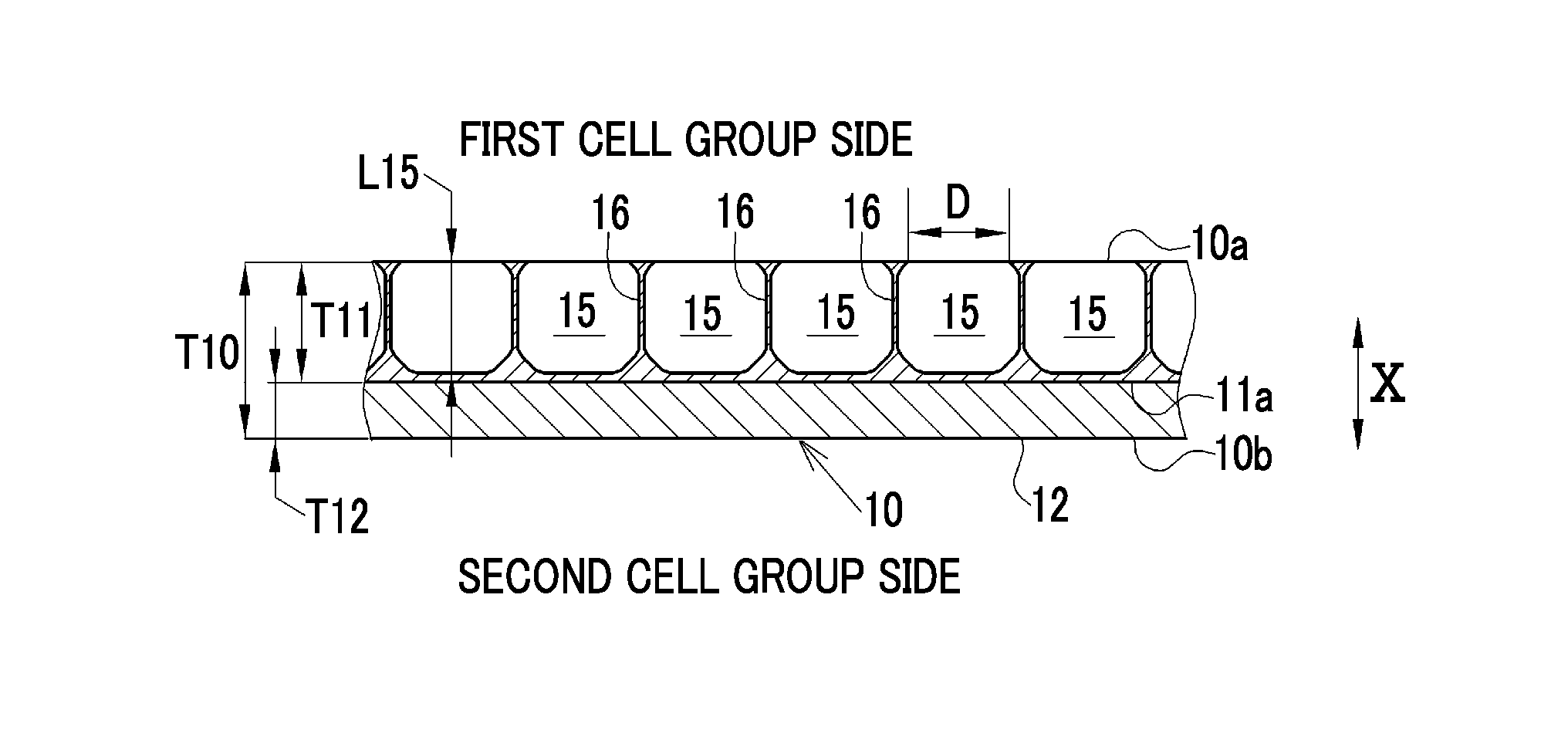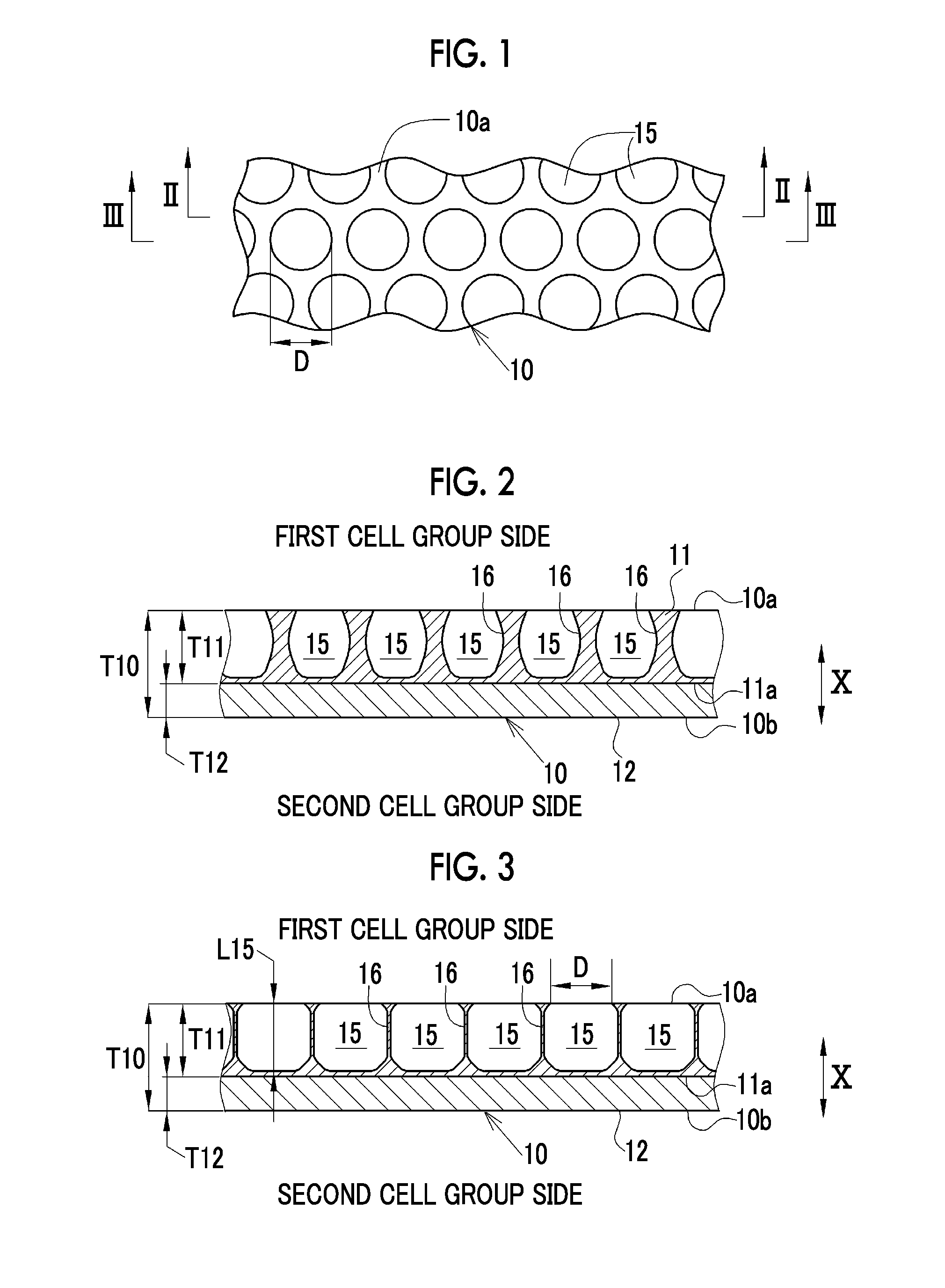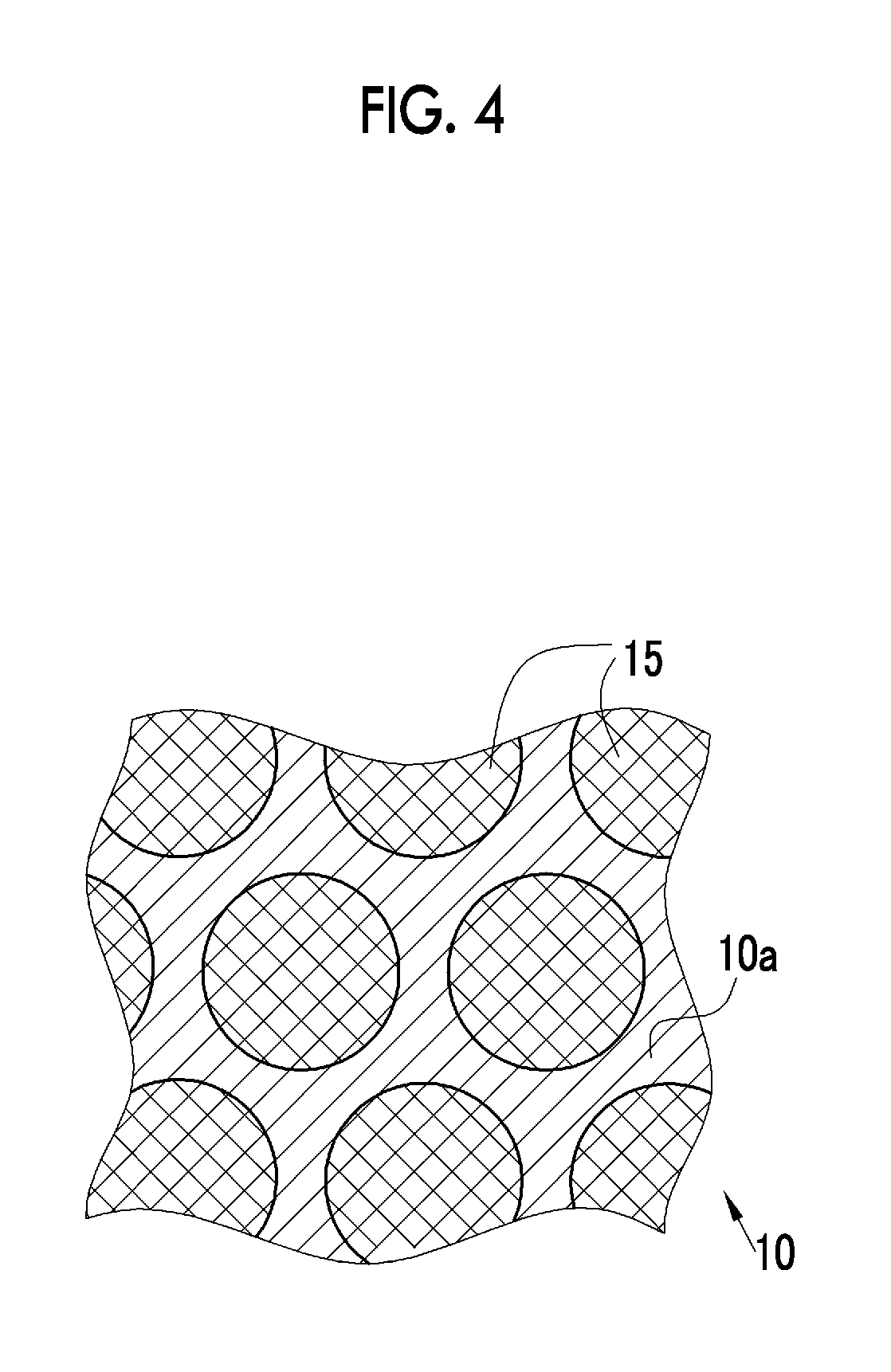Film
a film and film technology, applied in the field of film, can solve the problems of film being shifted from the affected area, not staying in the desired position, and agglutination may still occur, and achieve the effect of suppressing agglutination
- Summary
- Abstract
- Description
- Claims
- Application Information
AI Technical Summary
Benefits of technology
Problems solved by technology
Method used
Image
Examples
first embodiment
[0028]In FIG. 1 to FIG. 3, a film 10 includes an adhesive layer 11 and an adhesion inhibiting layer 12. The film 10 uses the adhesive layer 11 configuring one film surface 10a by adhering the adhesive layer 11 to a first cell group as an adhesion target portion in a biological body. The first cell group, for example, is an affected area such as a wounded portion, a suture portion sutured by an operation and the peripheral portion thereof, and the like. In the film 10 which is being adhered to the first cell group, the adhesion inhibiting layer 12 configuring the other film surface 10b is directed towards a second cell group side which is different from the first cell group.
[0029]The first cell group and the second cell group which are aggregates of a plurality of cells and are different from each other, for example, may be separated from each other in the biological body, may be separable from each other even when the first cell group is closely attached to the second cell group in ...
second embodiment
[0056]The pore 15 of the film 10 described above is not penetrated in the adhesive layer 11 in the thickness direction X, but may be penetrated. For example, as illustrated in FIG. 8, a film 50 which is a second embodiment includes an adhesive layer 51 and an adhesion inhibiting layer 12, and in the adhesive layer 51, a plurality of pores 53 are formed to be penetrated in the thickness direction X as an air gap. Furthermore, the same reference numerals are applied to the same members as those of the film of the first embodiment, and the description will be omitted. Each of the pores 53 is penetrated in the adhesive layer 51 in the thickness direction X.
[0057]The adhesion inhibiting layer 12 is formed on a surface 51a of the adhesive layer 51 on a side opposite to one film surface 50a in a state of blocking the penetrated pore 53. By this adhesion inhibiting layer 12, the first cell group and the second cell group are separated into the one film surface 50a side and the other film su...
third embodiment
[0061]The adhesive layer is not limited to the honeycomb structure, and may be a porous structure in which the diameter of each of the openings in the one film surface as described above satisfies a range of greater than or equal to 100 nm and less than or equal to 20 μm, and the depth of the pore satisfies a range of greater than or equal to 100 nm and less than or equal to 20 μm. As illustrated in FIG. 9 and FIG. 10, a film 60 of a third embodiment includes an adhesive layer 61 and an adhesion inhibiting layer 12. In this embodiment, PLA (manufactured by Sigma-Aldrich Co. LLC., a product number of 719854) is used in the adhesive layer 61, but the configuration is not limited thereto, and as a material for forming the adhesive layer 61, the materials forming the adhesive layer 11 described above are able to be used. As with the adhesive layer 11, in the adhesive layer 61, pores 63a to 63k having different sizes and shapes are formed by being irregularly positioned as an air gap.
[00...
PUM
| Property | Measurement | Unit |
|---|---|---|
| Fraction | aaaaa | aaaaa |
| Fraction | aaaaa | aaaaa |
| Diameter | aaaaa | aaaaa |
Abstract
Description
Claims
Application Information
 Login to View More
Login to View More - R&D
- Intellectual Property
- Life Sciences
- Materials
- Tech Scout
- Unparalleled Data Quality
- Higher Quality Content
- 60% Fewer Hallucinations
Browse by: Latest US Patents, China's latest patents, Technical Efficacy Thesaurus, Application Domain, Technology Topic, Popular Technical Reports.
© 2025 PatSnap. All rights reserved.Legal|Privacy policy|Modern Slavery Act Transparency Statement|Sitemap|About US| Contact US: help@patsnap.com



